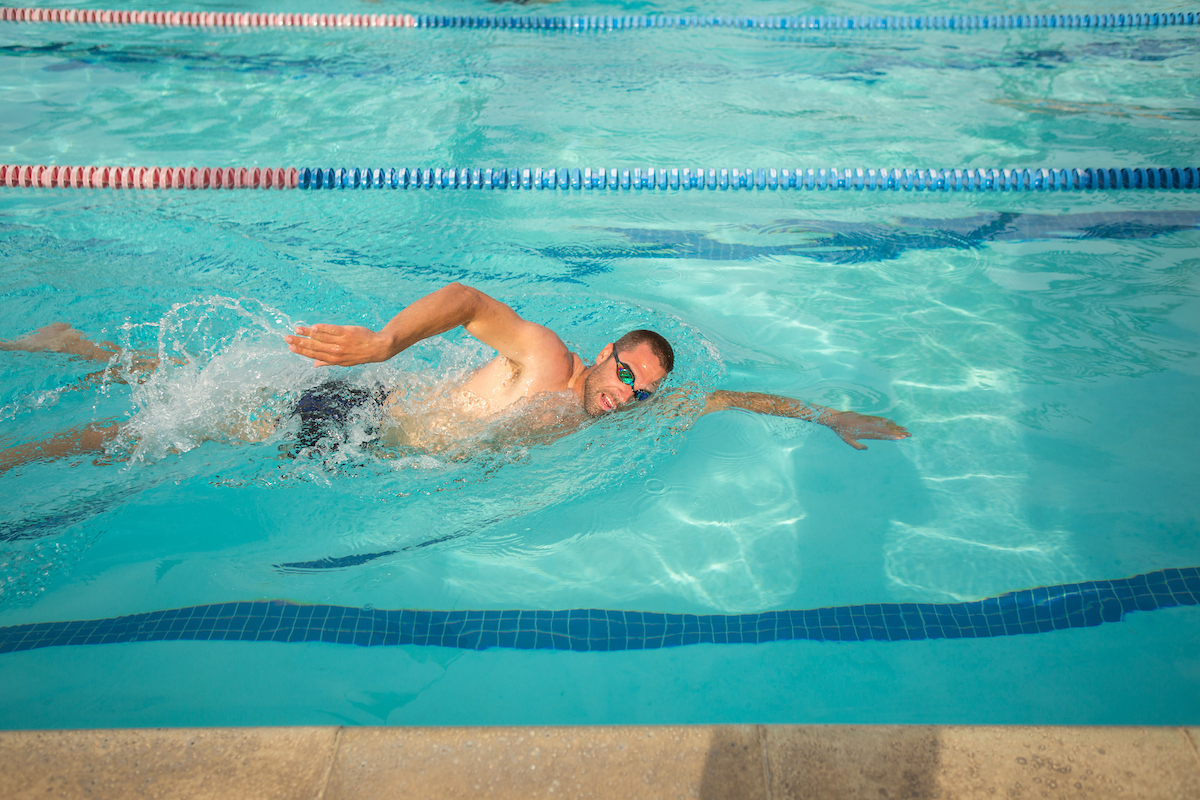At the Bay Club, we’re all about creating the daily health habits that make for a long and happy life. And there may be no better lifetime sport to enjoy at any age than swimming. Whether you’re a toddler who’s getting in the pool for the first time, floaties and all, or a grandparent who’s been swimming all your life, lap swimming is one of the best ways to stay in shape, keep your joints safe, and get your heart rate up. And just like any sport, mixing it up in your lap routine is also important to keep your body from hitting a plateau (or serious swim boredom). Each swim stroke has its own unique physical benefits, so incorporate each of these into your swim for a well-rounded pool workout.
Want to see your favorite strokes broken down with swimming drills? We spent a day at the pool watching some of the masters—Bay Club Courtside Aquatics Director Steve Hurko and Head Coach Cam Owen—show us how it’s done.
Breaststroke
Breaststroke may make you look like a frog, but it’s great for a full-body workout. Your lower body works the hip flexors and hamstring muscles to support the kicking motion, and your upper body relies on the strength of your deltoids, back muscles, and even chest muscles to move you forward. Think your core got skipped? Think again! Your abs and obliques are also engaged in this stroke, helping you to move your body in an unfamiliar motion.
Freestyle
Freestyle is effective at activating primary muscles to work synchronously. Your shoulder muscles are working through the entire motion of the stroke, which probably won’t surprise you in this stroke that looks like it primarily works your upper body. But the real speed of freestyle comes from your glutes, which are working the whole time as your legs propel you forward. And if you work on proper form of freestyle, you’re also working your core to stabilize your hips and lower back.
Backstroke
Backstroke is a great way to counterbalance your freestyle, because it works many of the muscles that aren’t used in freestyle. While kicking in backstroke, you use muscles in both the front and back of your thighs, as well as your calves. You’re also likely using the muscles in your feet more than you do in freestyle. And just in case you’re looking for a high inner thigh exercise, backstroke works that hard-to-target area, too.
Butterfly
Often considered the most challenging of all the strokes, butterfly is a full-on full-body performance. Your entire upper body is actively working in this stroke, with your deltoids, biceps and triceps engaging together to lift you out of the water. Your entire core area is also worked to the max, from your pectorals to your lower abdominals, in order to connect your upper body movement with your lower body motion.
Want to get more out of your strokes? Or maybe introduce your little ones to the pool? Click here to learn more about our aquatics programs for adults and kids, and contact the Aquatics Department to get started!





